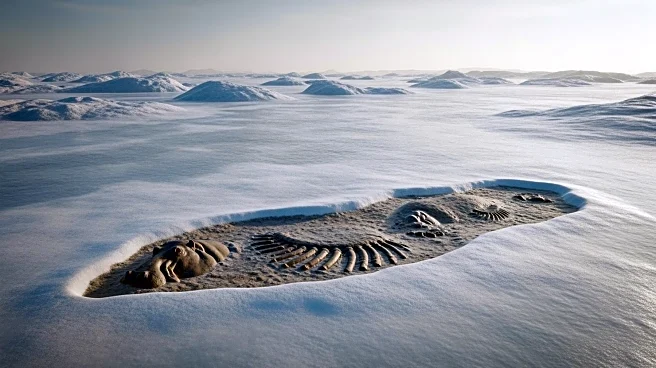What's Happening?
A recent study led by the University of Potsdam and the Reiss-Engelhorn-Museen Mannheim has revealed that hippos lived in central Europe much later than previously thought. The research, published in Current
Biology, indicates that hippos were present in the Upper Rhine Graben between 47,000 and 31,000 years ago, during the last ice age. This finding contradicts earlier beliefs that hippos disappeared from the region around 115,000 years ago. The study utilized genetic and radiocarbon dating methods to analyze ancient bones, showing that these hippos were closely related to modern African populations. The research highlights the complex ecological conditions of the Ice Age, where warm-adapted hippos coexisted with cold-climate animals like mammoths.
Why It's Important?
This discovery significantly alters the understanding of Europe's Ice Age ecosystems and the adaptability of species to changing climates. The presence of hippos in such a cold environment suggests that the climate was more variable than previously assumed, with periods warm enough to support these animals. This challenges existing models of Ice Age climate conditions and could lead to a reevaluation of other fossil records. The findings also underscore the importance of genetic diversity and geographical isolation in species survival, providing insights into how current species might adapt to ongoing climate change.
What's Next?
The study encourages further examination of other European hippo fossils, traditionally attributed to the last interglacial period, to reassess their timelines. Researchers aim to explore other heat-loving species from the same era to better understand the climatic and environmental conditions of the time. This could lead to a broader understanding of how species adapted to past climate changes, offering valuable lessons for current biodiversity conservation efforts.
Beyond the Headlines
The research highlights the intricate puzzle of Ice Age ecosystems, where local peculiarities contributed to a complex overall picture. This study is part of the 'Eiszeitfenster Oberrheingraben' project, which seeks to illuminate the climate and environmental evolution in the Upper Rhine Graben over the past 400,000 years. Such interdisciplinary efforts are crucial in piecing together the historical climate narrative, which can inform future climate models and conservation strategies.











